
One year later: Inside Sunnybrook's pandemic response



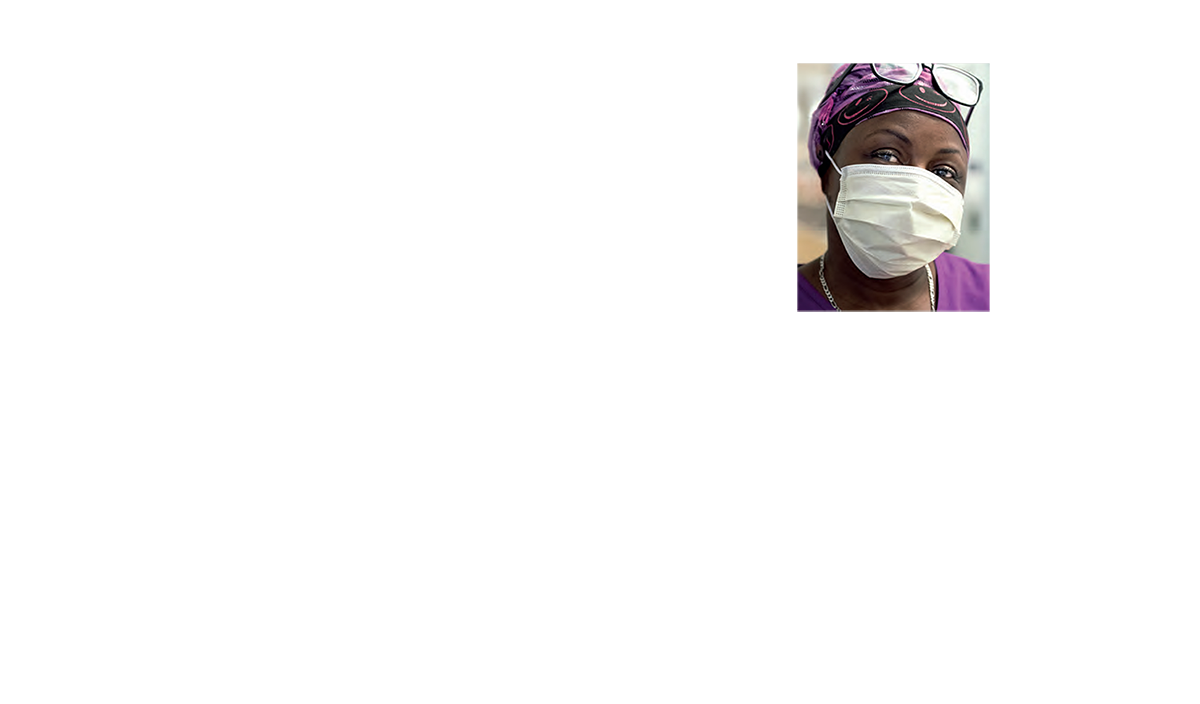
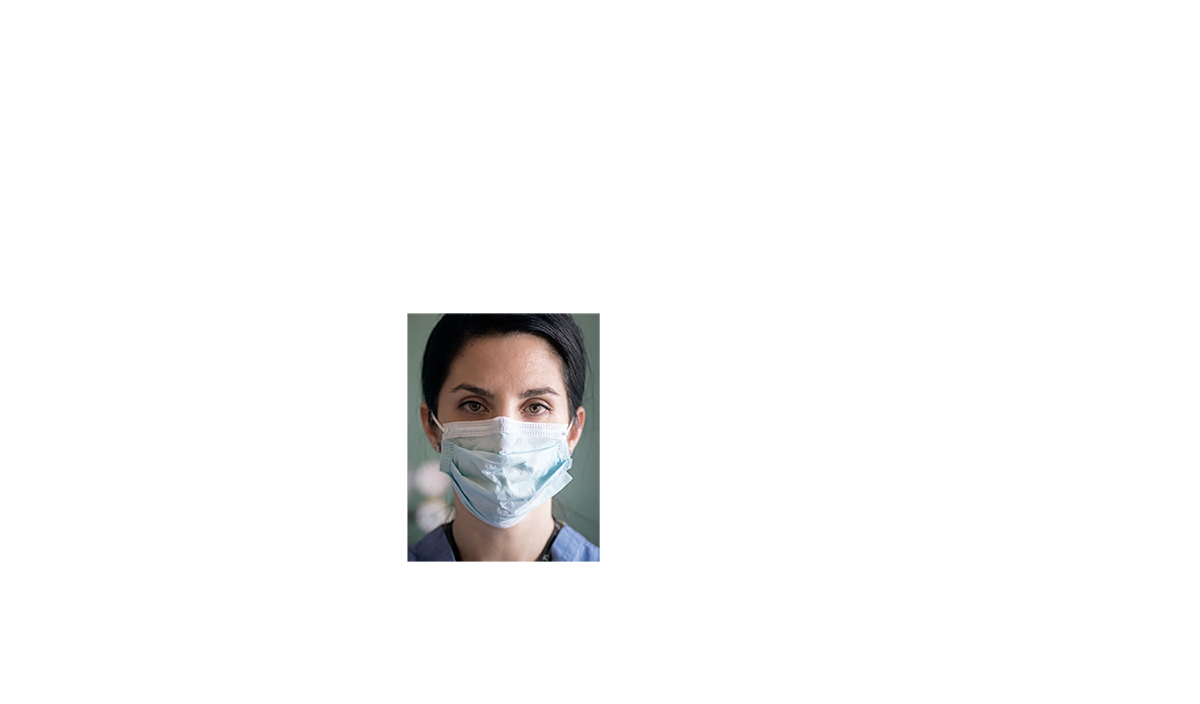


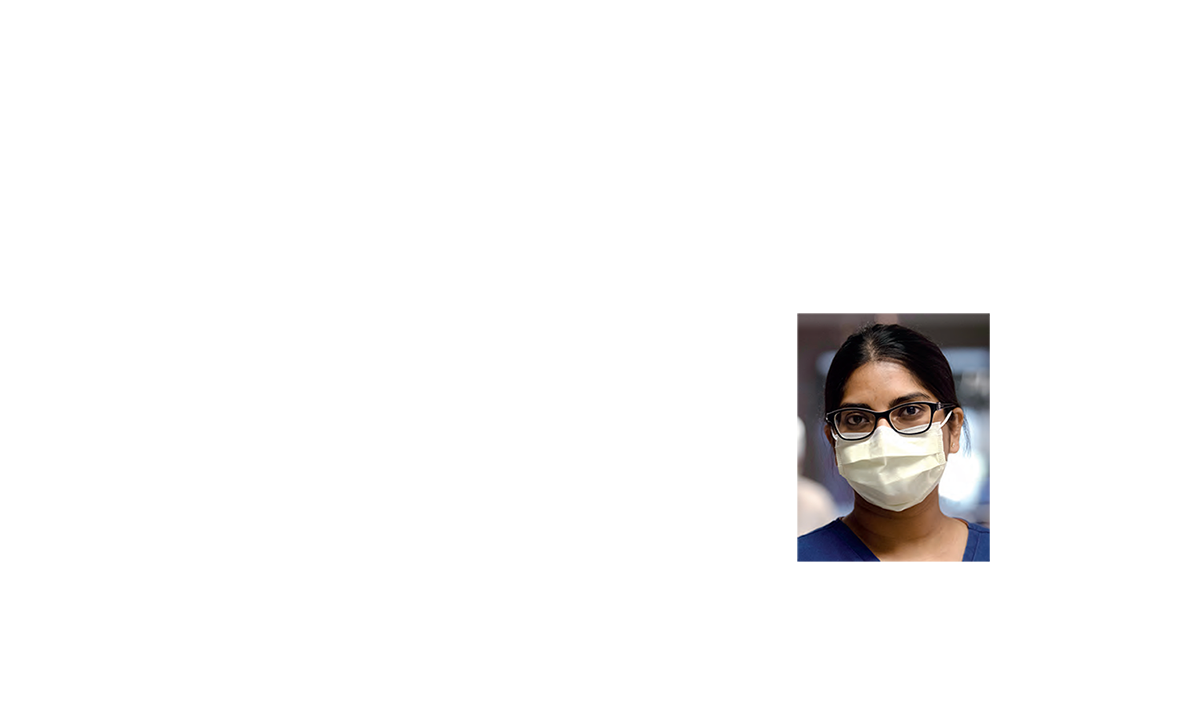
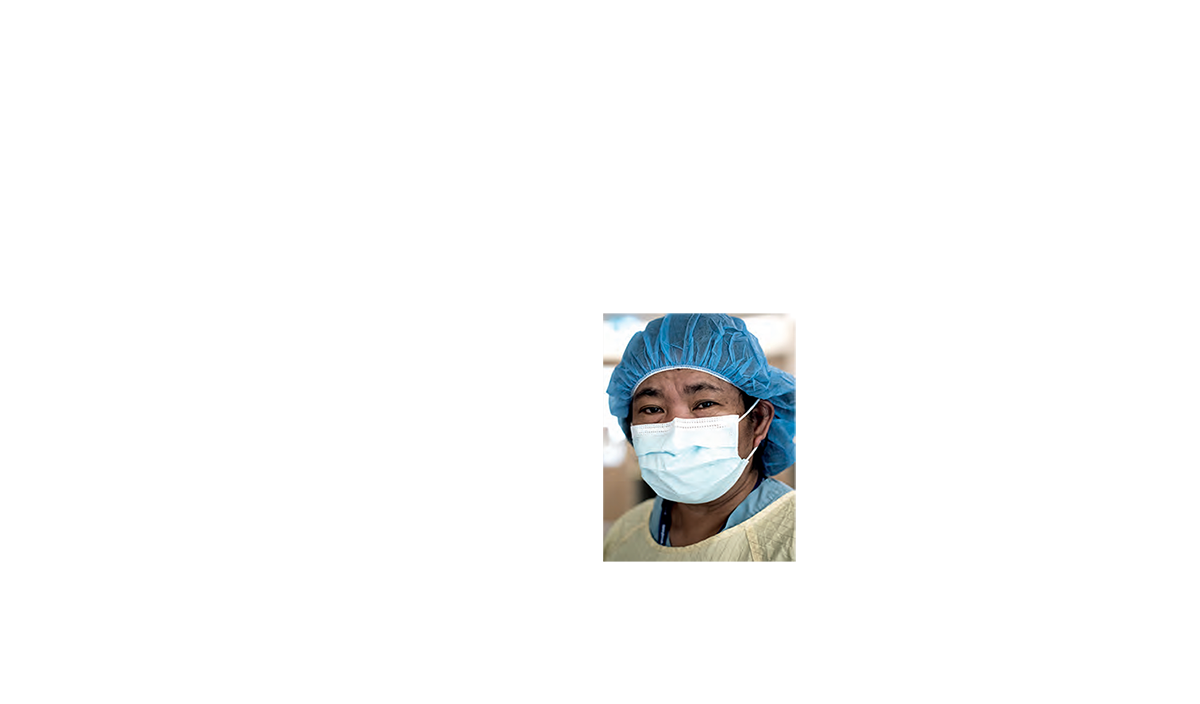


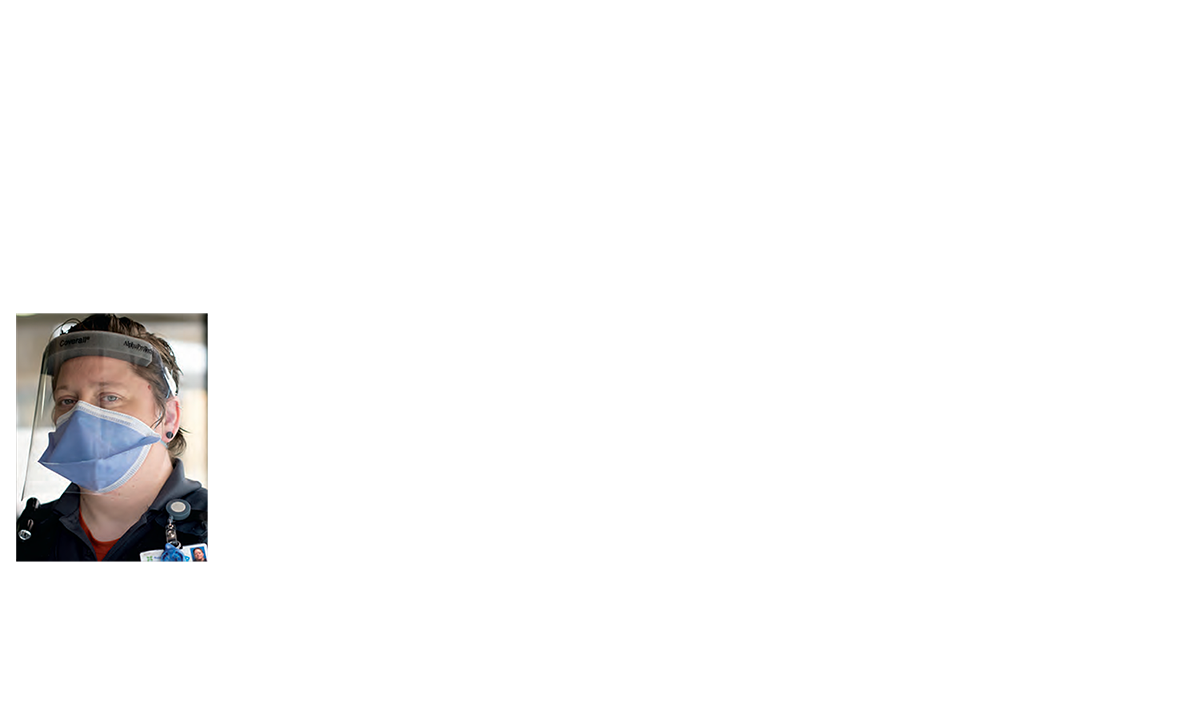


When Canada’s first case of the novel coronavirus, COVID-19, was confirmed in a patient at Sunnybrook on January 25, 2020, the hospital was preparing for a potential pandemic.
In the past year, Sunnybrook’s teams have worked tirelessly through stress, fear, uncertainty and a fundamental shift in the way health care is delivered.
To recognize the strength and resiliency of our staff, physicians, researchers, students, volunteers, and patients and their loved ones, these photos offer just a brief glimpse into the hospital since January 2020.
Thank you, Team Sunnybrook, for all that you do.
Photography by Kevin Van Paassen and Doug Nicholson, except where noted.
Staff in header image, from left to right: (top row) Subramaniam Vivagananda, Brenda Mayers, Marisa Moore, Hammad Aqeel, Paulette Reece, Dr. Vikas Bansal; (bottom row) Jennifer, Ekta Gupta, Julie Nardi, Elsa Galingan, Thusi Thuraisamy, Sima Zendegany.
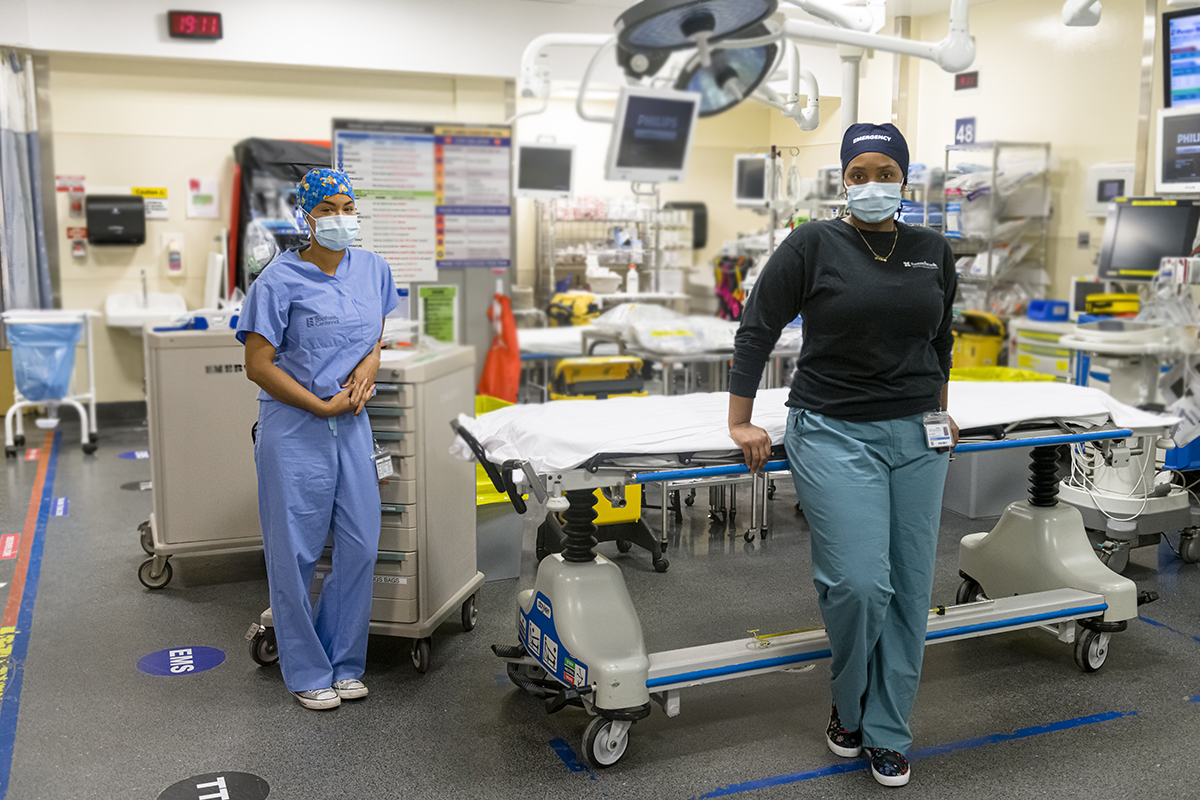
January 23, 2020 had already been a busy day in the Emergency Department at Sunnybrook. The team, including registered nurses Natacha Hainzelin and Shauna Tavernier, received a heads-up from paramedics that a patient with symptoms and recent travel to Wuhan was en-route to the hospital. Read more about the care they provided »
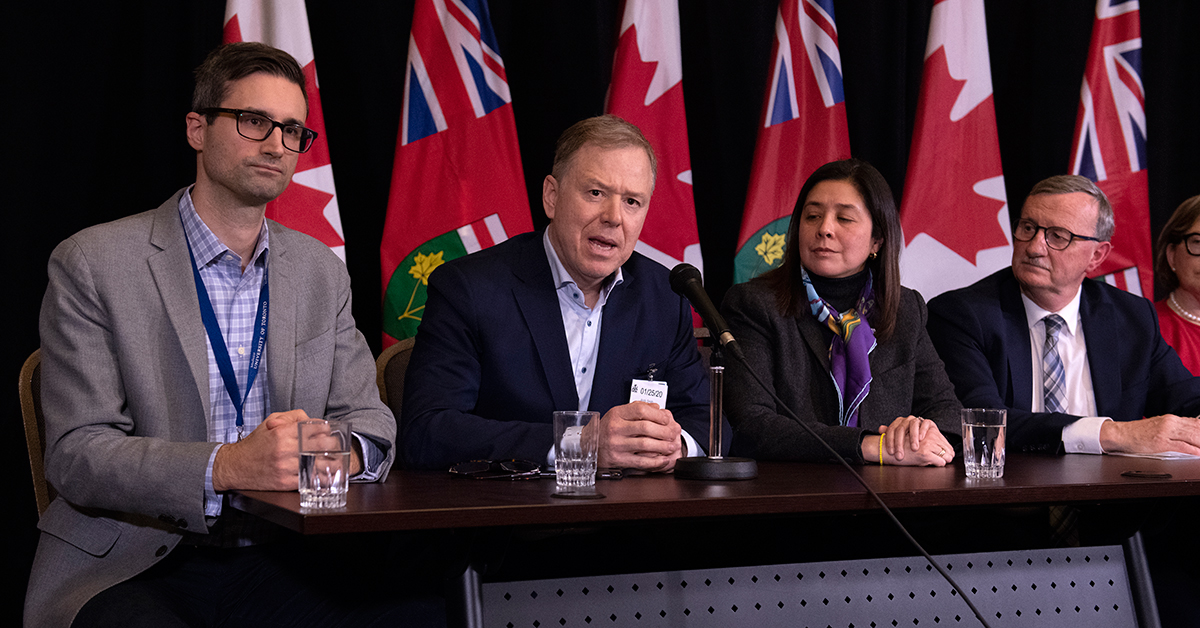
On January 25, 2020, Sunnybrook announced that the patient had tested positive for the novel coronavirus — the first presumptive case in Canada. Dr. Jerome Leis, Sunnybrook's Medical Director of Infection Prevention and Control, and Dr. Andy Smith, Sunnybrook President & CEO, spoke at a press conference alongside local and provincial health officials.
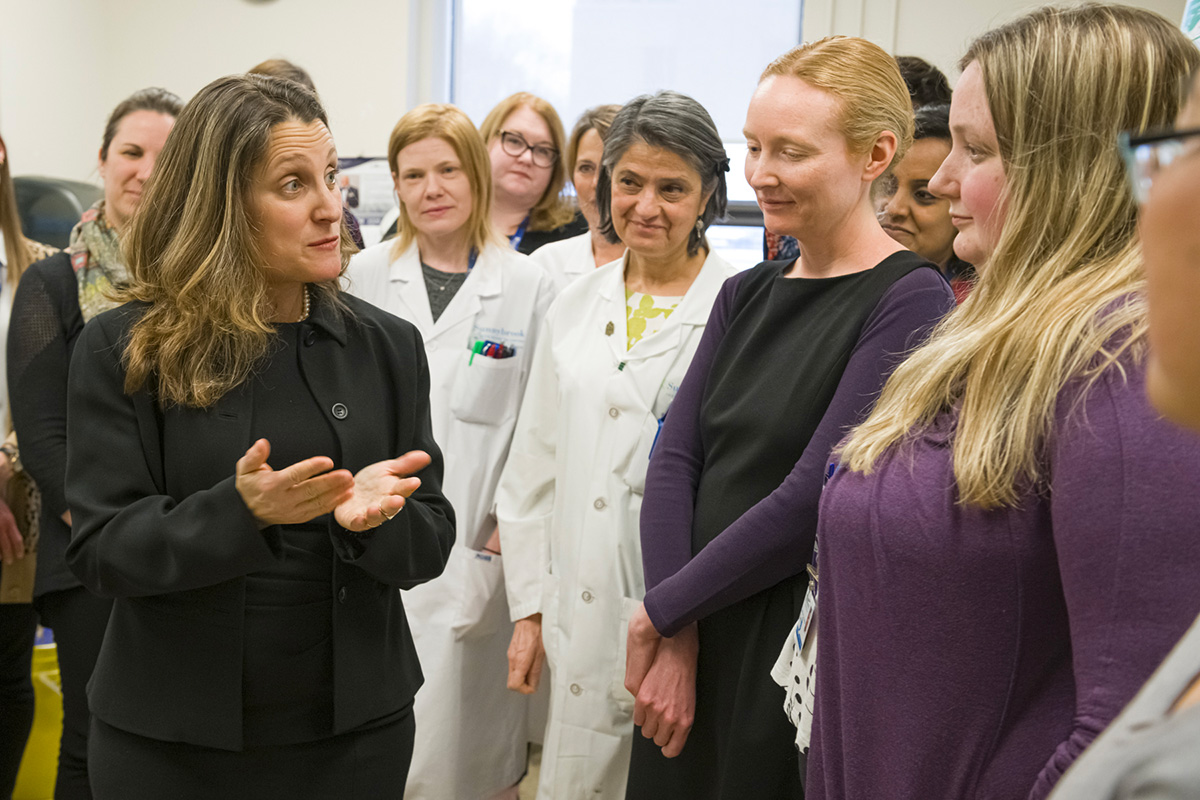
On March 6, 2020, Deputy Prime Minister Chrystia Freeland visited Sunnybrook, where she met with members of the hospital's Infection Prevention and Control team. Read more about the team's work during the pandemic.
On March 11, as the virus spread across the world, the World Health Organization (WHO) declared that COVID-19 was a pandemic.

On March 12, Sunnybrook announced that a team of Canadian researchers had isolated SARS-CoV-2, the virus responsible for the COVID-19 pandemic.
On March 17, the Government of Ontario declared a state of emergency in an effort to help contain the spread of COVID-19.
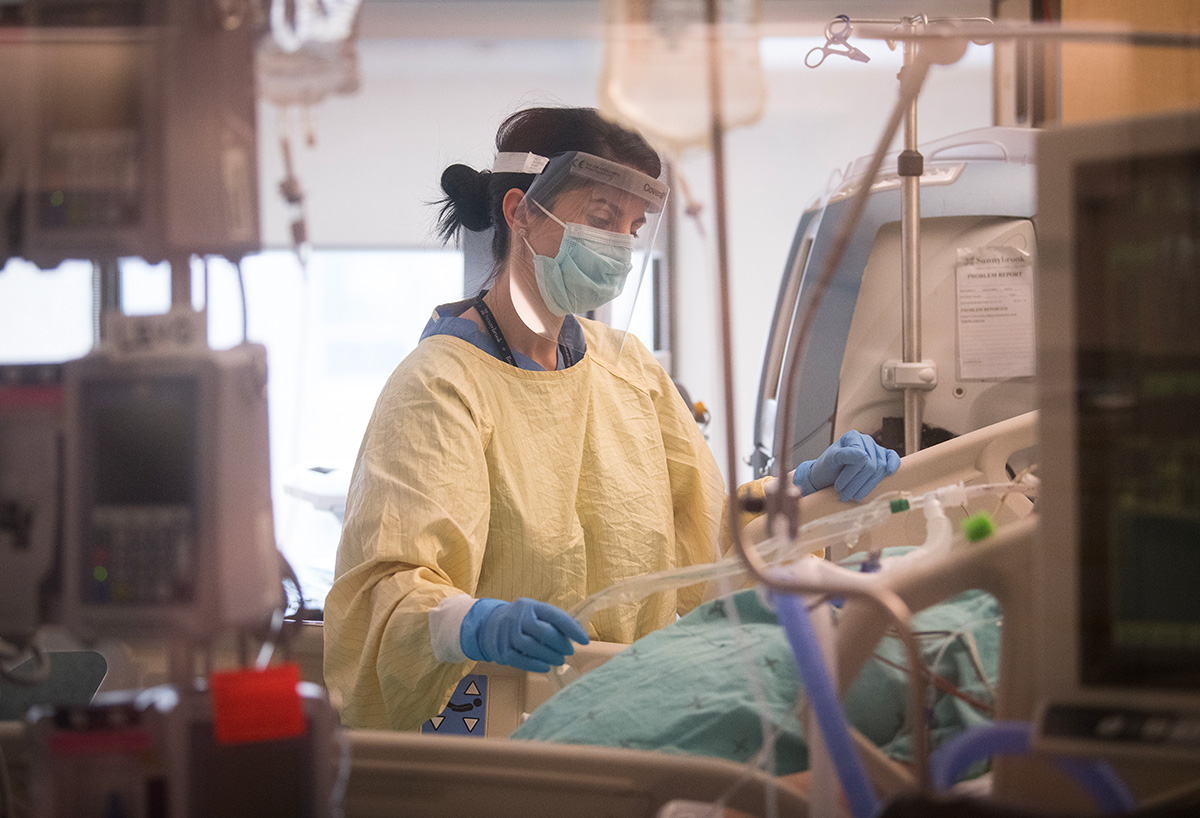
Two dedicated COVID-19 units opened in anticipation of a potential influx of patients requiring intensive care and respiratory support. Shown above is Julie Nardi, clinical and professional leader for respiratory therapy. Read about the work of Julie and our respiratory therapists.
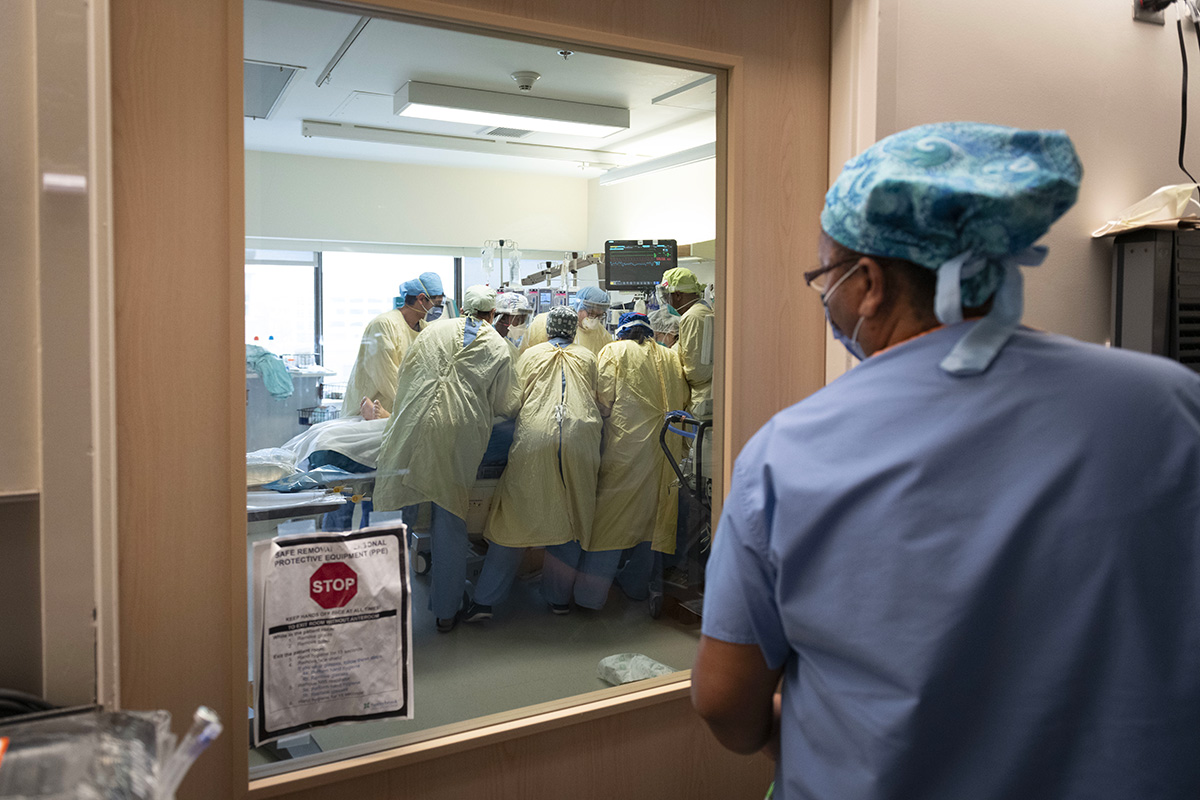
The medical team on one of the COVID units prepares to reposition a patient with COVID-19 onto their stomach. The technique, known as proning, helps critically ill patients breathe by allowing more oxygen to enter the blood.
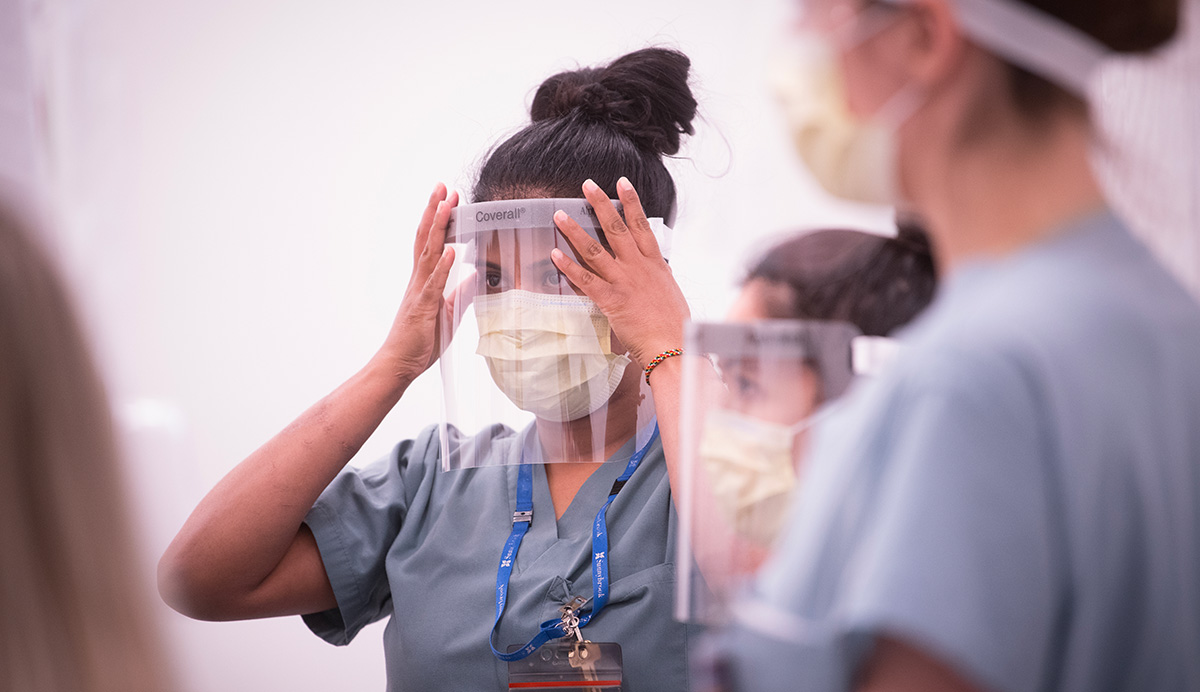
From January to early March 2020, patients who were experiencing respiratory symptoms arrived at Sunnybrook’s Emergency Department in increasingly large numbers to be tested for COVID-19. To help alleviate that pressure, a space elsewhere in the hospital was renovated to become Sunnybrook’s COVID-19 Assessment Centre. The centre opened on March 17, 2020.
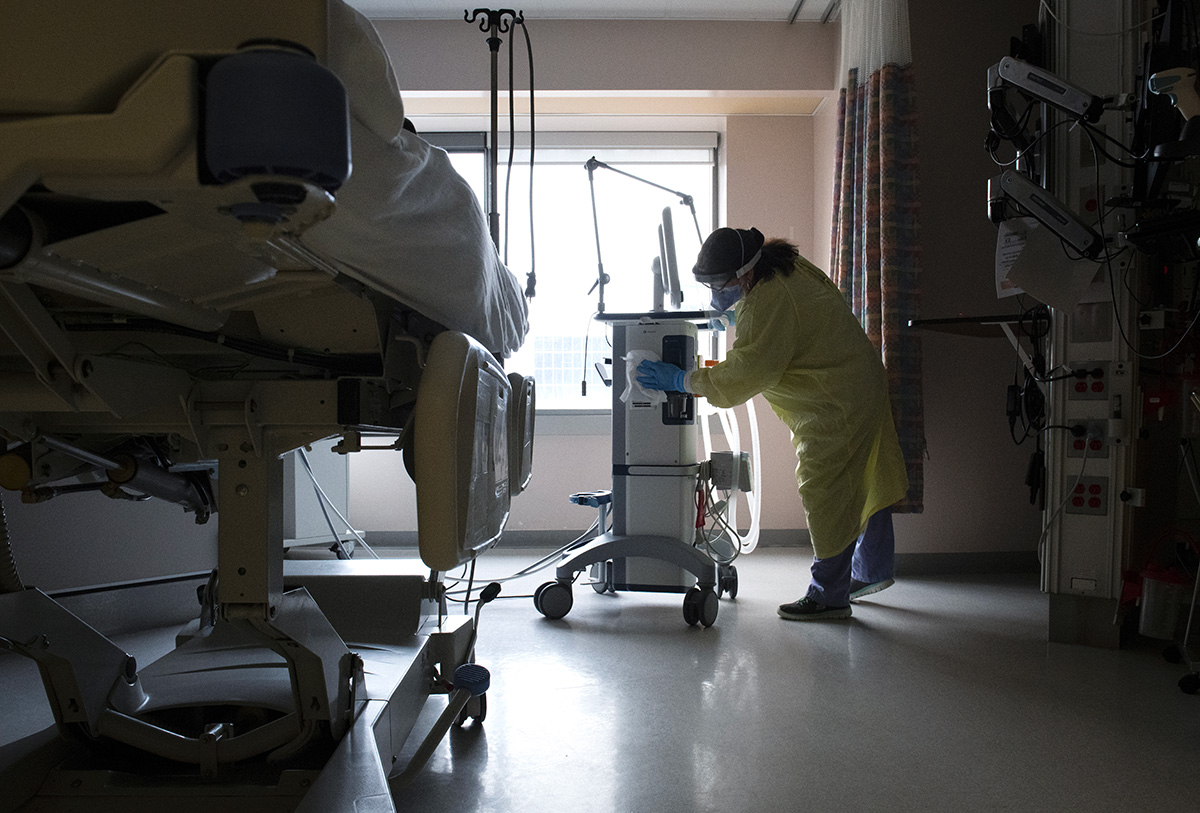
Environmental services team member Angela Corsaro sterilizes a patient room in the critical care unit in March 2020.
By April 2020, Sunnybrook researchers were ramping up research activity related to COVID-19. Here are just two of the over 100 COVID-19 trials that have been launched at Sunnybrook since the start of the pandemic:
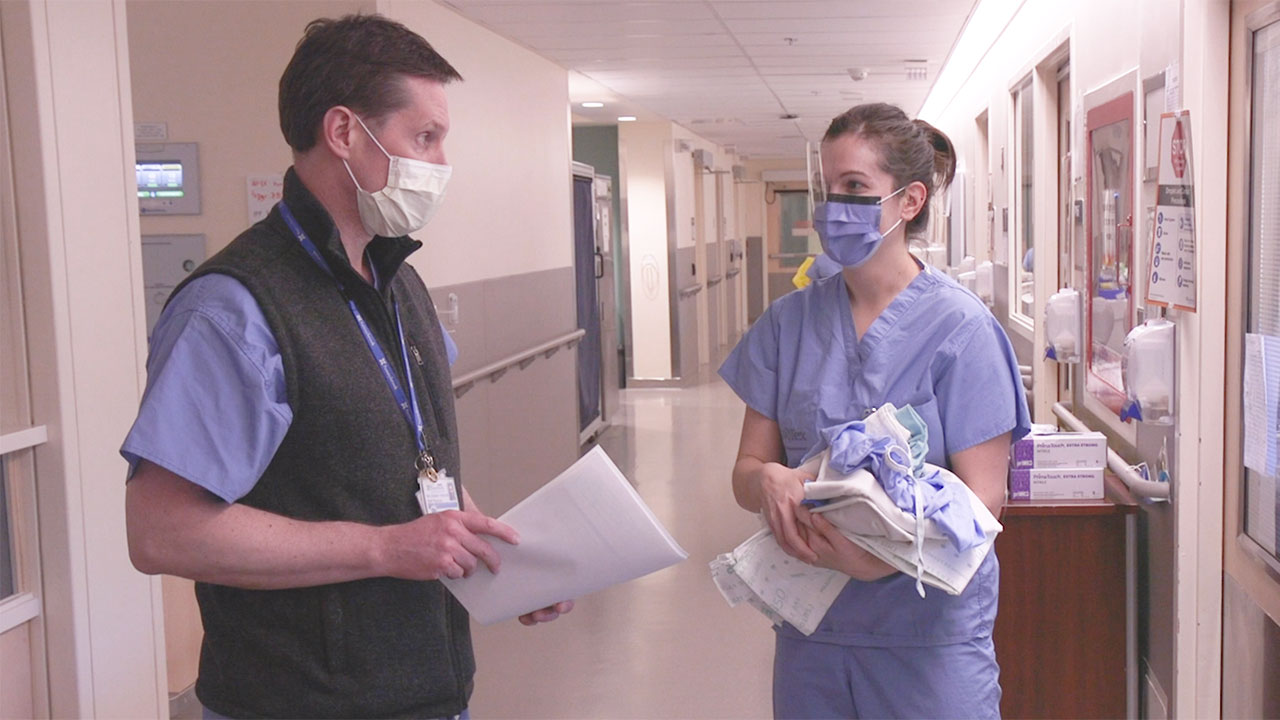
The Canadian arm of the global Solidarity/WHO trial, co-led by Dr. Rob Fowler, is looking at the safety and efficacy of different drugs to treat COVID-19. Sunnybrook is also the sponsor of this trial, helping to coordinate it at all participating Canadian hospitals.
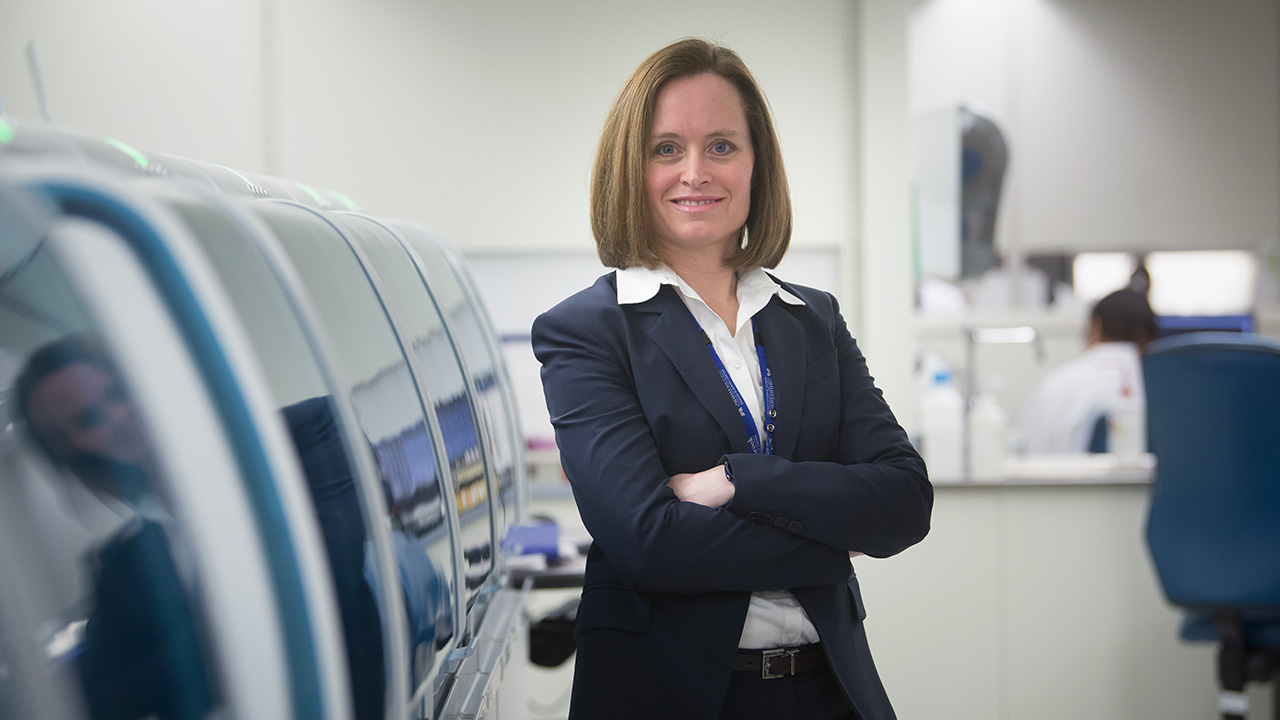
The CONCOR-1 Trial, co-led by Dr. Jeannie Callum, is investigating the therapeutic use of blood plasma from recovered patients as a new treatment for COVID-19.
Learn more about COVID-19 research at Sunnybrook »
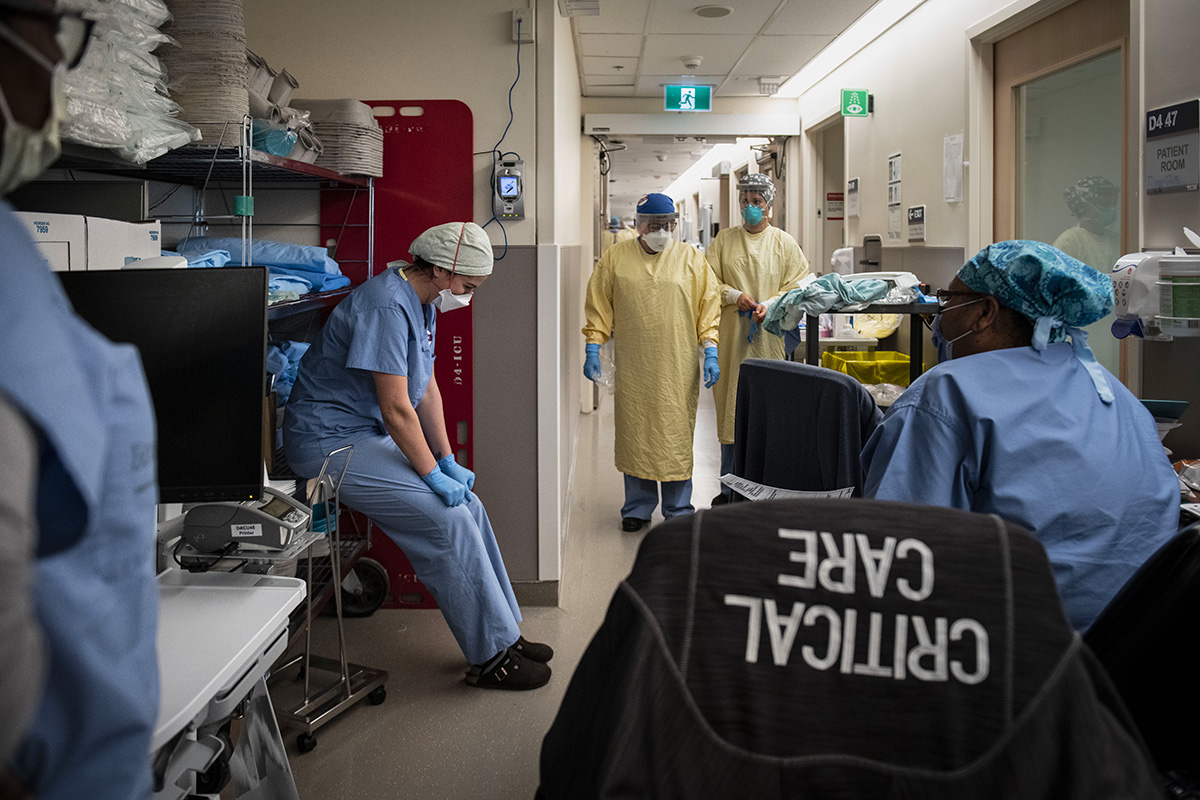
Jenny Jones, a registered nurse in one of our dedicated COVID-19 units, takes a moment to rest as patient volumes increased in April 2020.
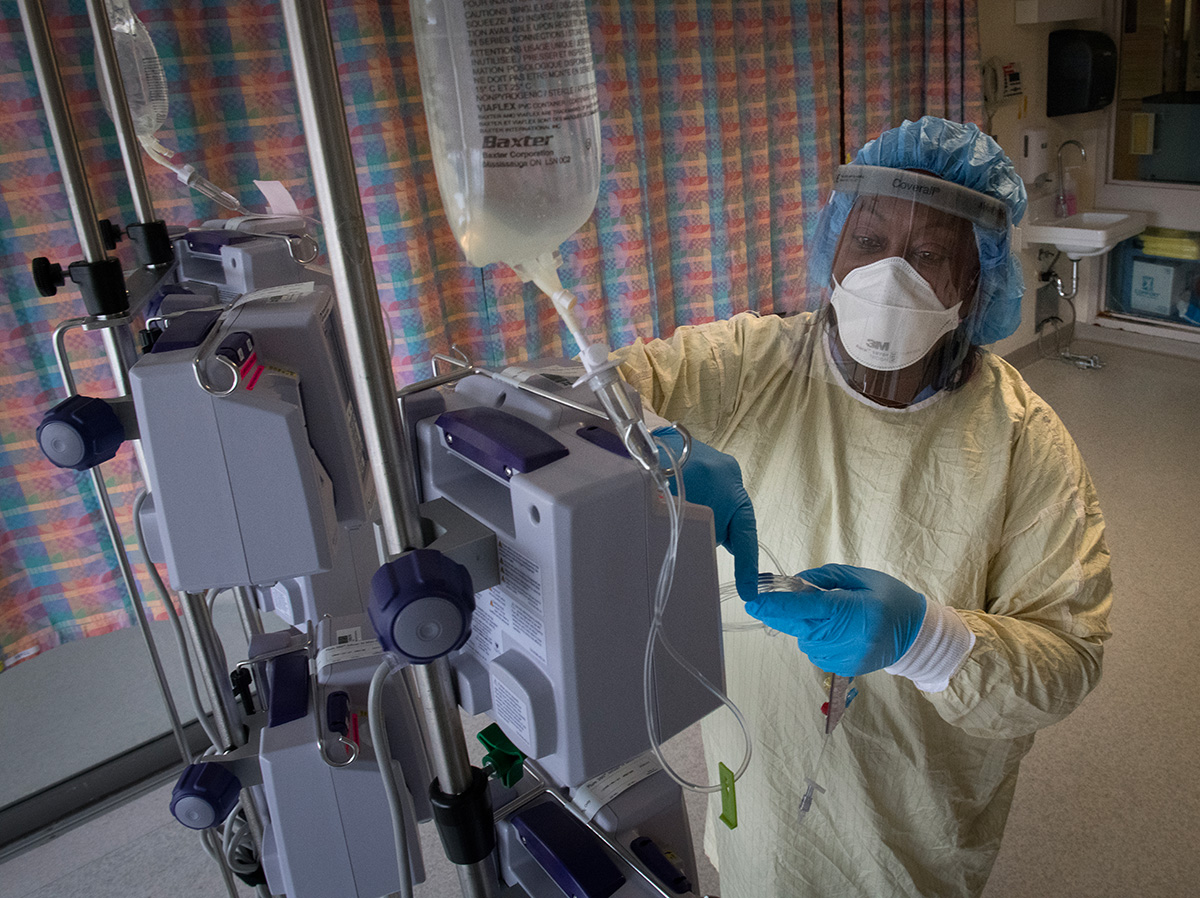
Brenda Mayers, a registered nurse in our critical care unit, was profiled on the hospital's Instagram account, and she shared some personal advice for her colleagues during this challenging time: “Continue to do what you do best by providing quality care for our patients, and throughout your darkest days, light appears.”
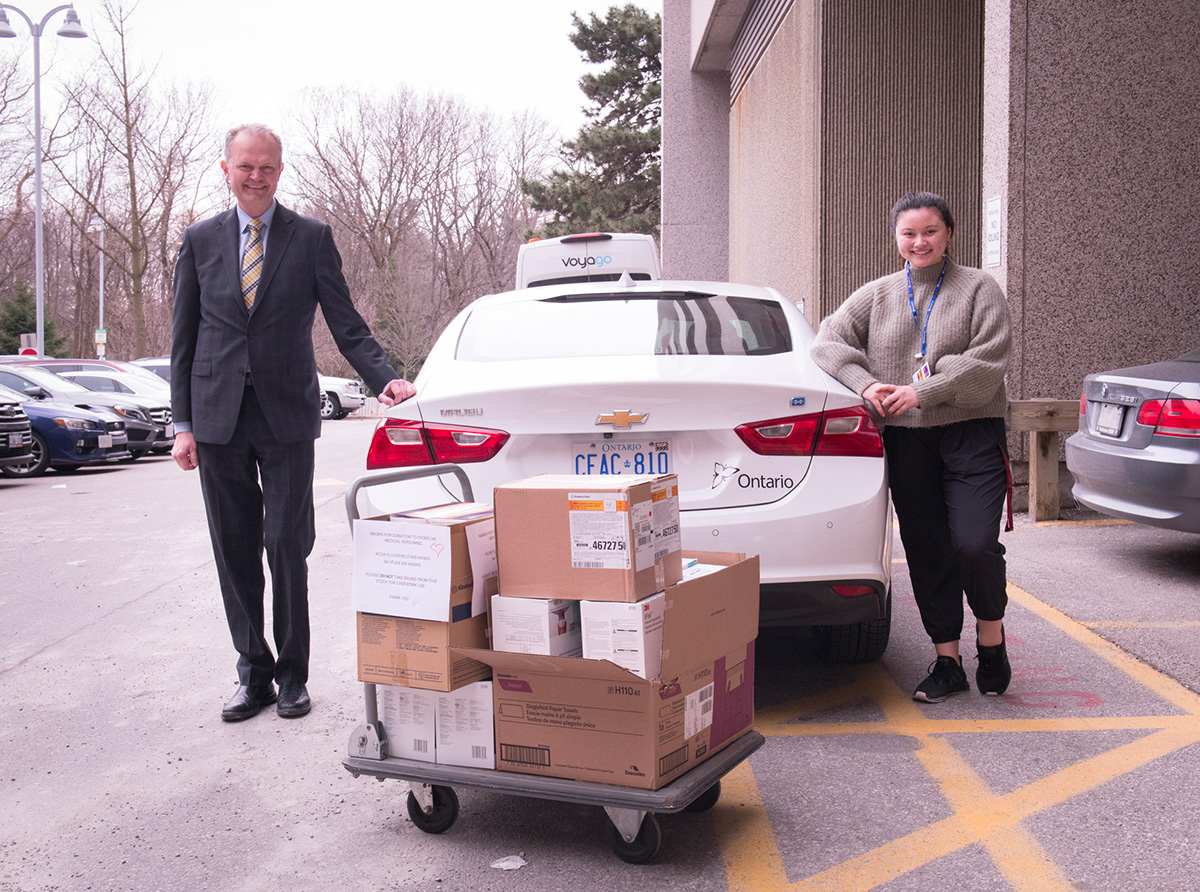
Sunnybrook issued a plea to the community to donate unused and unopened masks, gowns and eye protection to those who need it most. The community answered the call. Hundreds of thousands of pieces of personal protective equipment were donated.
Thousands of individuals, businesses and volunteers also donated time, goods and funds to support our teams. Sunnybrook is grateful to those who have made a difference during the pandemic.

In April 2020, a new 'Code Airway' team was formed at Sunnybrook. This dedicated intubation team came together as a result of collaboration between the anesthesia, nursing and anesthesia assistant teams. Intubation helps seriously ill patients breathe, but it also presents a high level of risk to members of the health care team. Learn how this unique team helped ensure the safety of our patients and our staff.
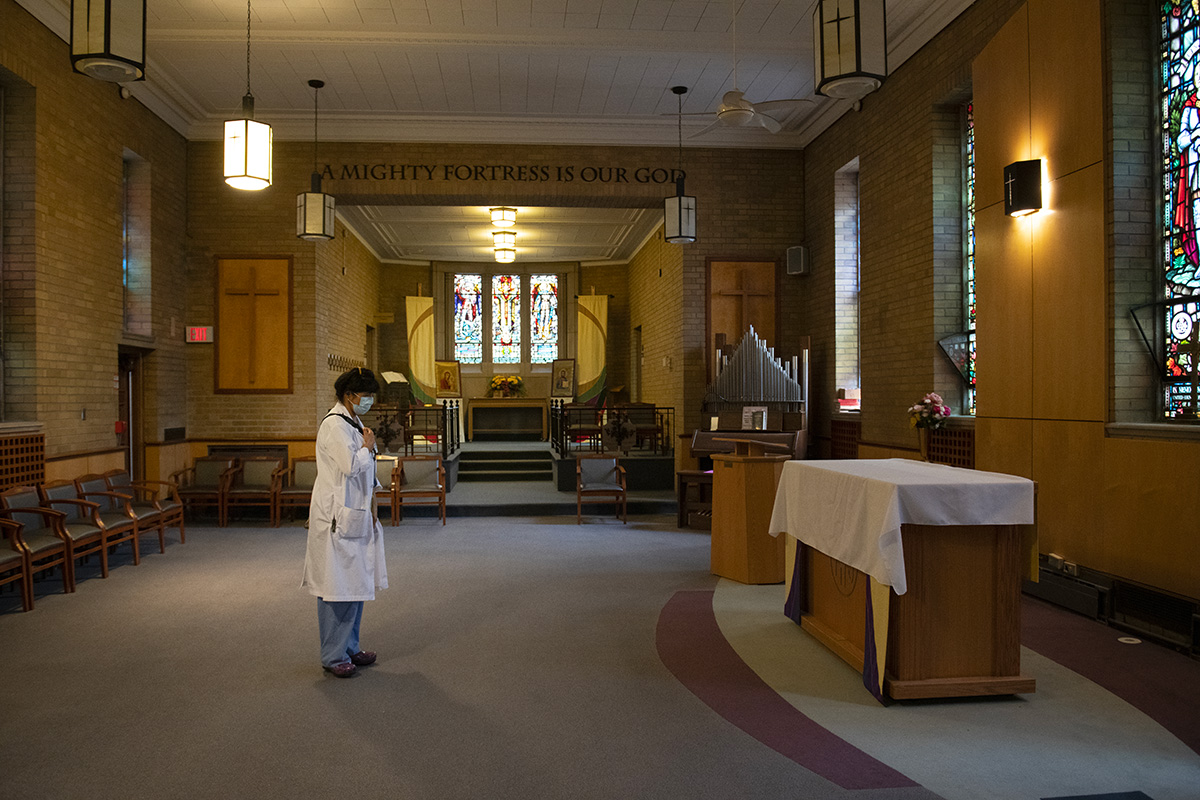
In spring 2020, vascular access nurse Adriana Ortiz Gonzalez visited Sunnybrook’s chapel for a moment of quiet reflection.
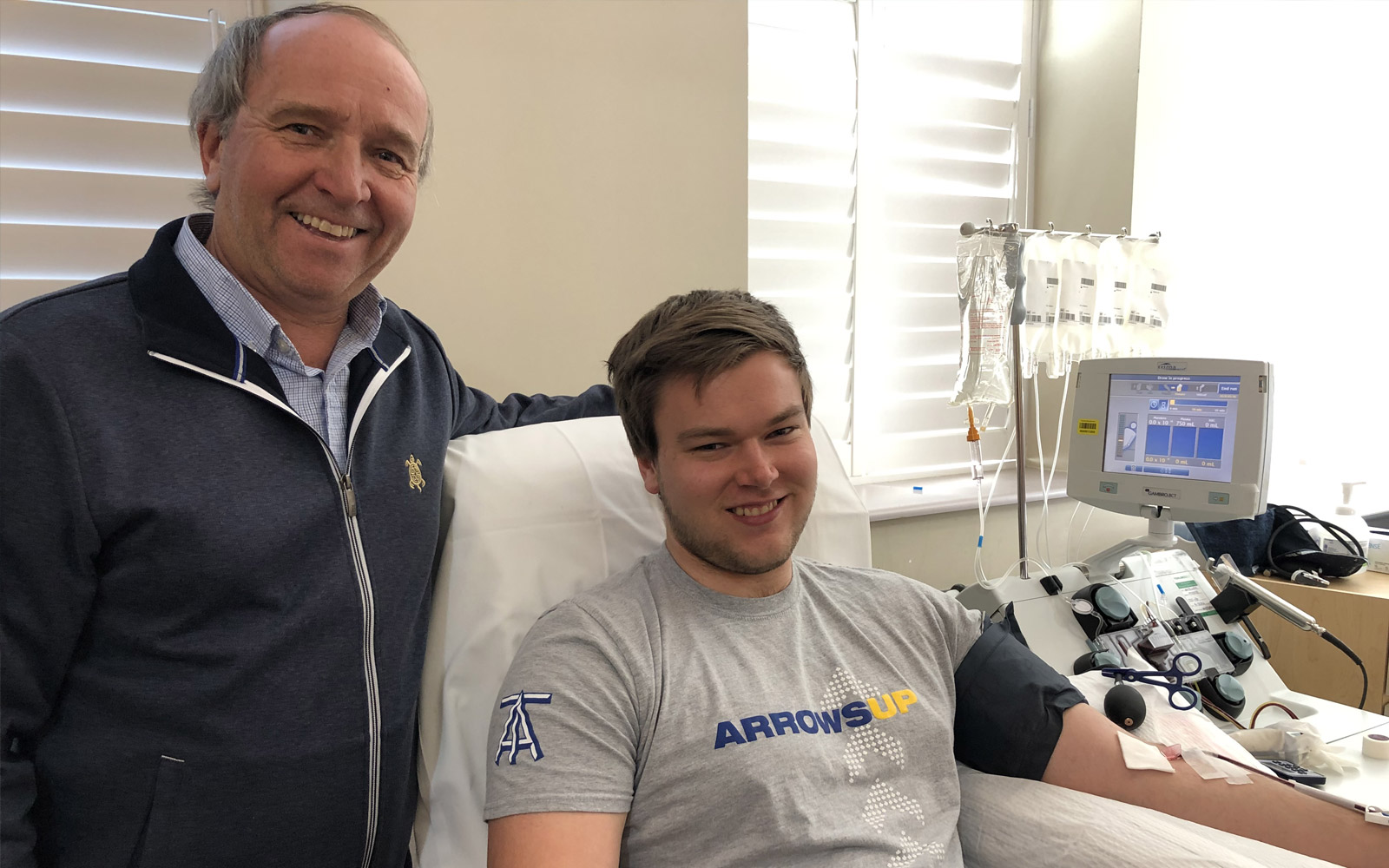
(photo submitted by Richard Carl and Patrick)
On May 1, 2020, Richard Carl became the first person in Toronto to donate his blood plasma as part of a promising clinical trial coordinated by Sunnybrook that could be a breakthrough in the fight against COVID-19. His son Patrick, also determined to be involved, donated his plasma five days later. But Richard wasn’t done yet.
In partnership with Sunnybrook’s CONCOR-1 team and Sunnybrook Foundation, Richard, an experienced not-for-profit fundraiser, has already helped to raise over an astounding $1 million toward funding the trial.
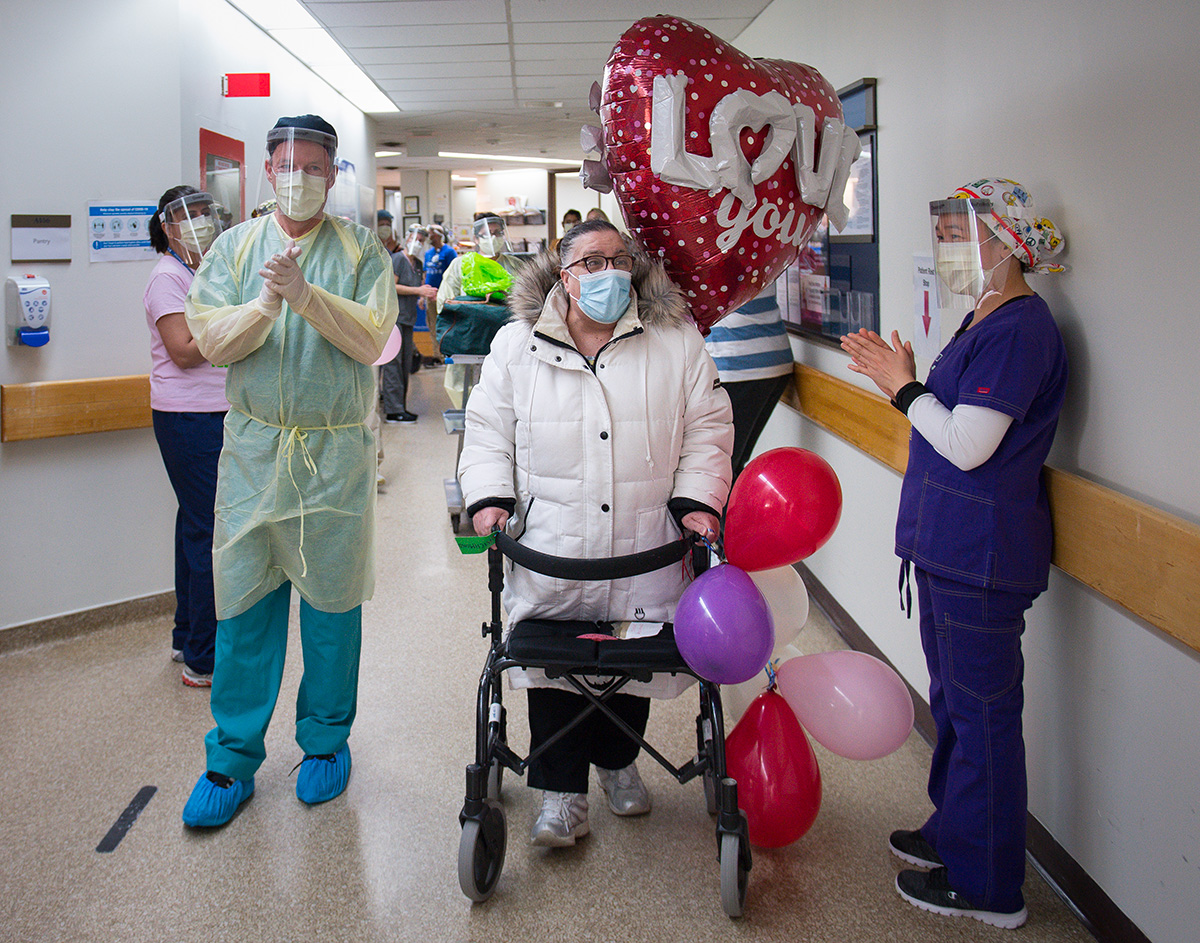
After three weeks in acute care with COVID-19, and another two weeks in a rehabilitation unit, Serena walked out of Sunnybrook’s St. John’s Rehab on May 6, 2020. Rehabilitation is an important step in the recovery process for many patients with COVID-19, whose muscles can weaken after being confined to a hospital bed for weeks.
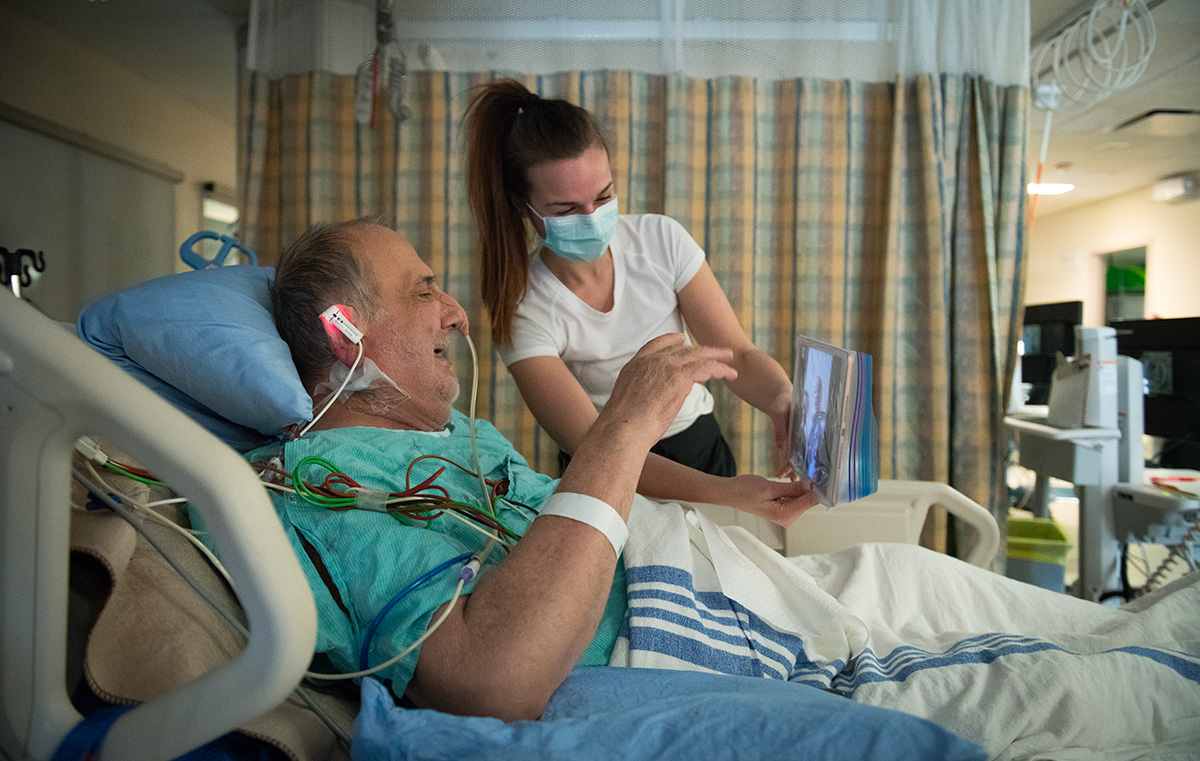
Social worker Lisa Jensen is shown helping a patient use an iPad to communicate with loved ones. A $100,000 fundraising initiative was launched to connect hospitalized patients to their loved ones.
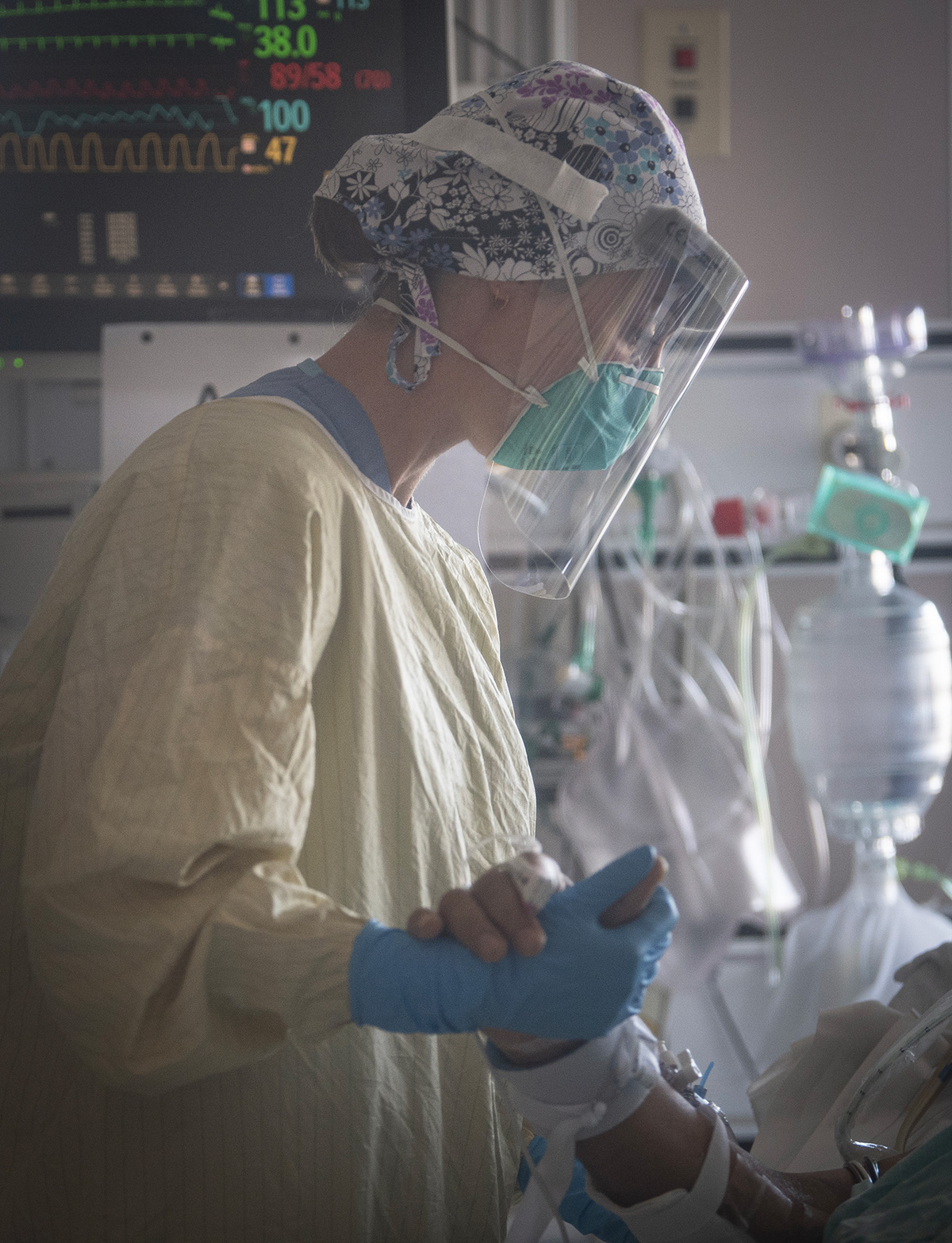
Physiotherapist Karen Montgomery is shown holding a patient’s hand in the critical care unit.
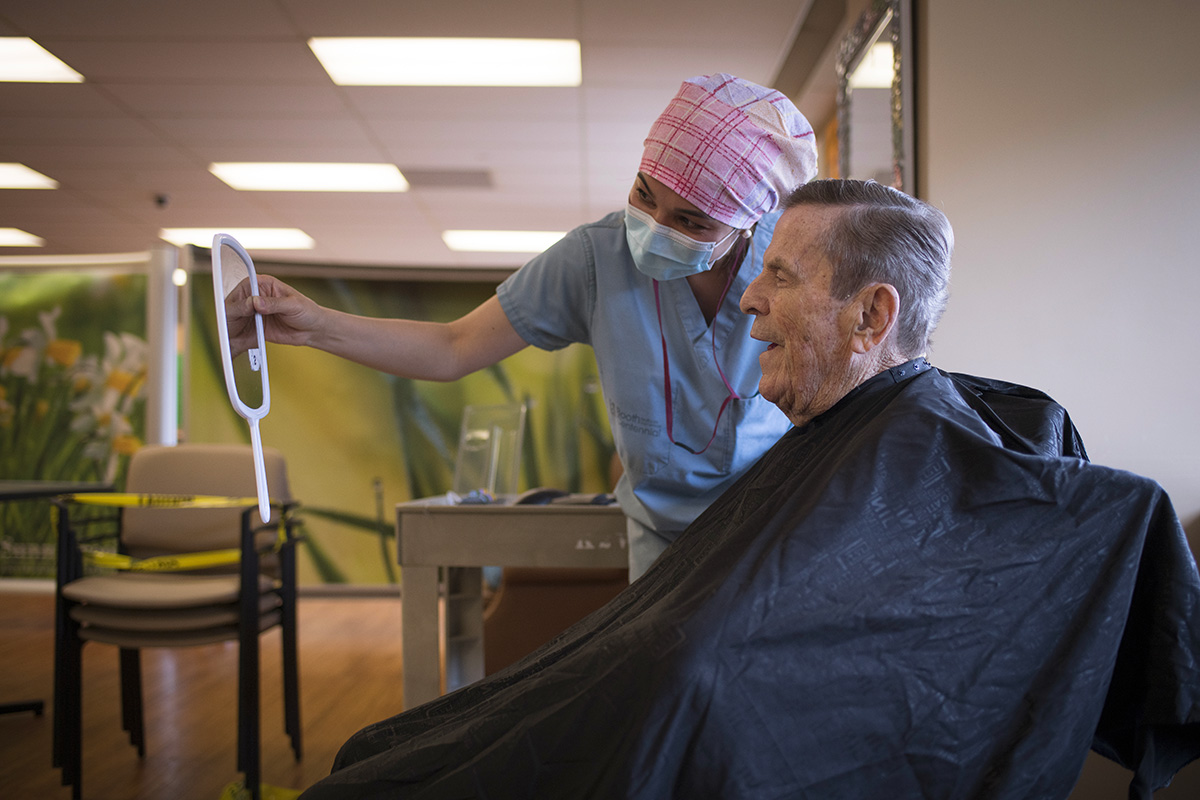
With the barbershop at the Sunnybrook Veterans Centre closed because of the pandemic, registered nurse Roya Khudayar — a hairdresser in her former life — gave WWII Veteran Paul Murphy his first haircut in months.
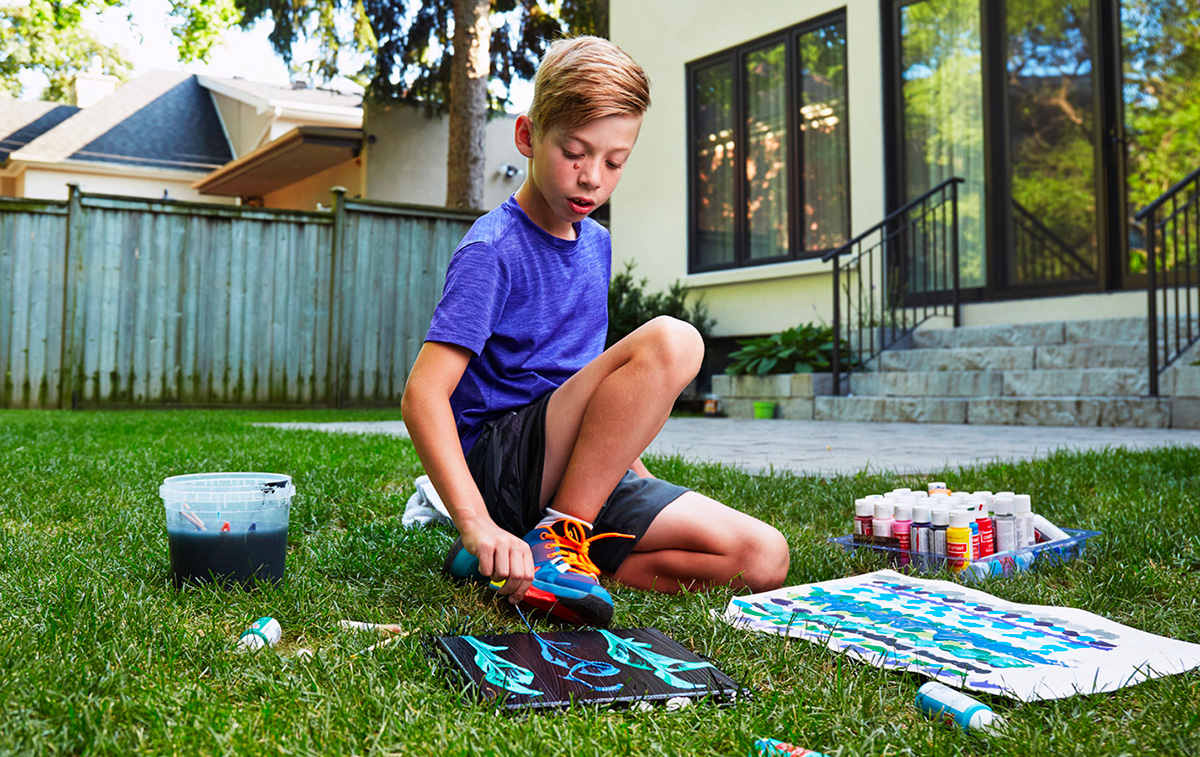
(photo credit: Jason Mortlock)
June 2020: When Micah decided to use his paintings of flowers to raise money for Sunnybrook, he wasn't confident he'd reach his $100 goal. Now he has exceeded it by nearly 20-fold, raising close to $2,000 for Sunnybrook’s COVID-19 Response Fund. Read more about how Micah and other members of our community found new and creative ways to support Sunnybrook’s fight against the pandemic.

July 2020: Aaron Hou, along with his network of friends and supporters, rallied to purchase iPads for Sunnybrook patients, giving them a tool to communicate with loved ones. Aaron is also a McMaster University student who is now working with Dr. Samira Mubareka on COVID-19 research at Sunnybrook.
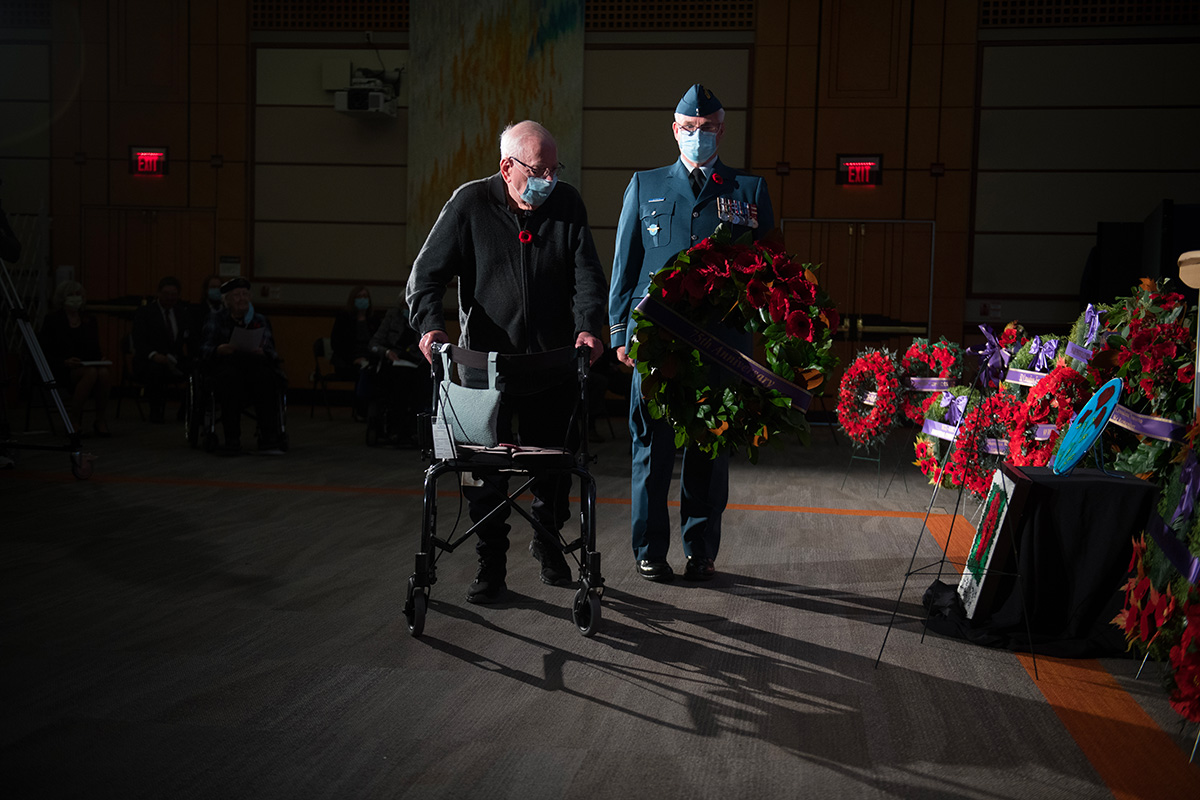
Sunnybrook is home to Canada's largest Veterans' care facility. Due to the pandemic, the 2020 Remembrance Day ceremony was recorded in advance and then broadcast on TV and online, so that our Veteran residents, our staff and the community could watch safely.
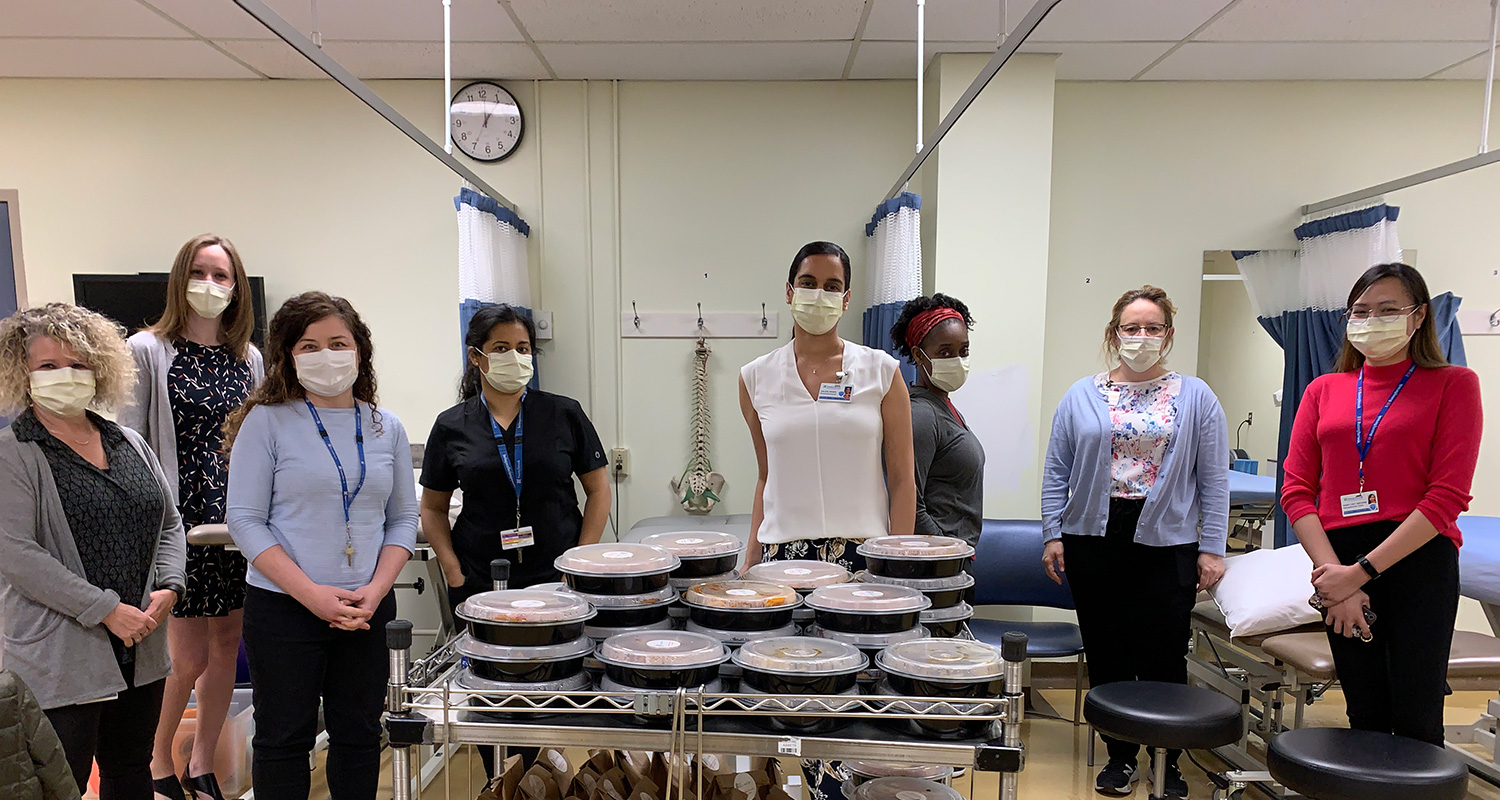
Ever since the earliest days of Canada’s response to the COVID-19 pandemic, our community has stepped up to support Sunnybrook’s efforts in every way possible. They have been there for us, from giving their hard-earned money to support front-line initiatives and groundbreaking research projects, donating PPE and meals to our staff, or even finding creative ways to host virtual fundraisers.
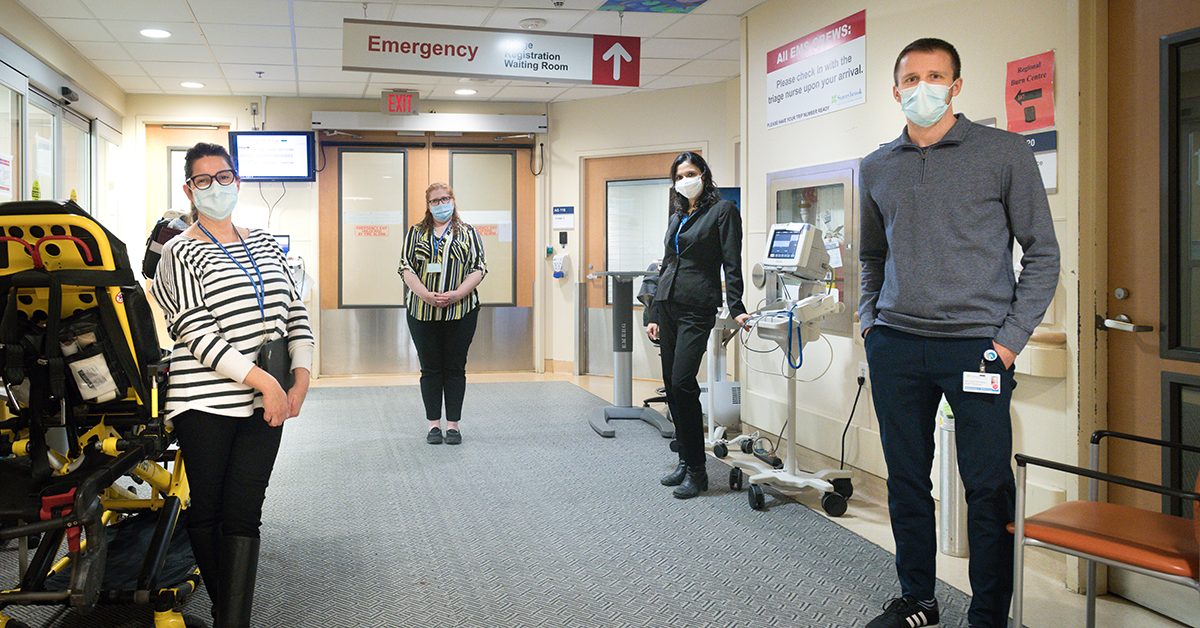
On December 1, 2020, Sunnybrook launched its virtual Emergency Department, part of a six-month pilot also involving Unity Health Toronto and University Health Network. Our Emergency Department saw a decrease in patient visits during Wave 1 of the pandemic in the spring, likely due to patient fears of COVID-19. Learn more about this initiative »
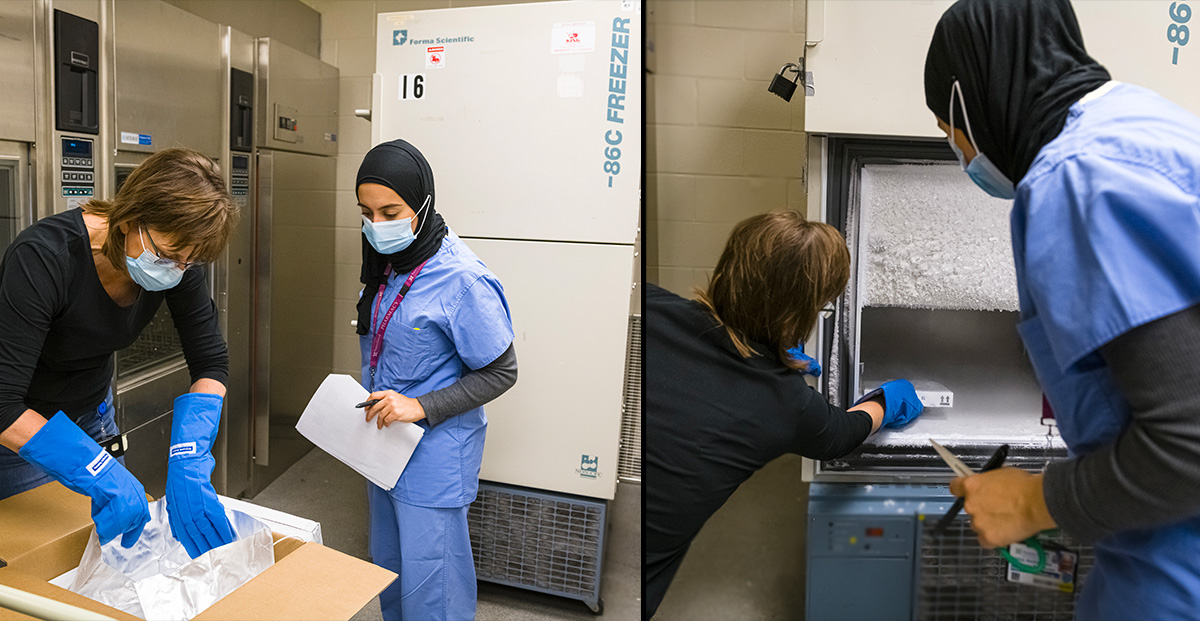
On December 21, 2020, Sunnybrook received its first shipment of the Pfizer-BioNTech vaccine. Pharmacy technicians Lisa Marini and Osna Mansouri are shown storing the vaccine in an ultra-low temperature freezer at Sunnybrook.
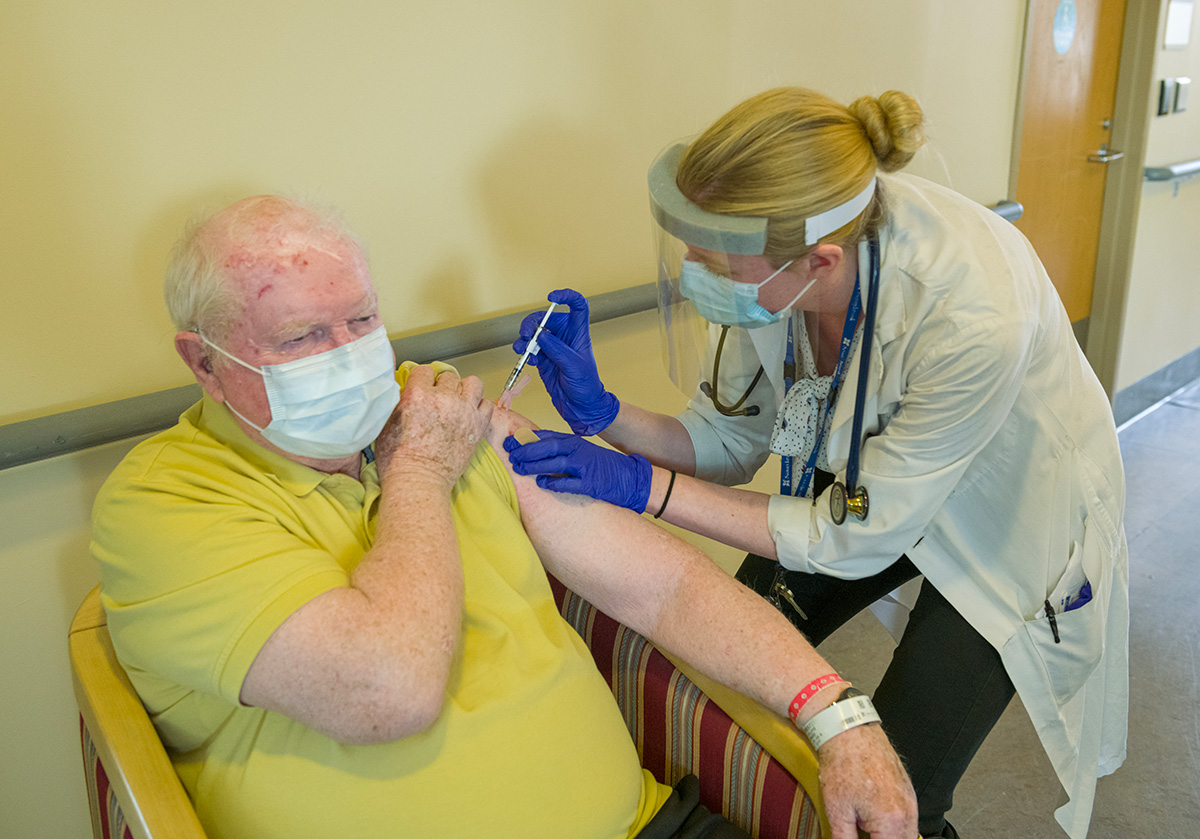
On December 22, Dr. Robyn Moxley administered the first dose of the Pfizer-BioNTech vaccine to Richard Ratcliffe. Richard was one of the first residents of our Veterans Centre to receive the COVID-19 vaccine.
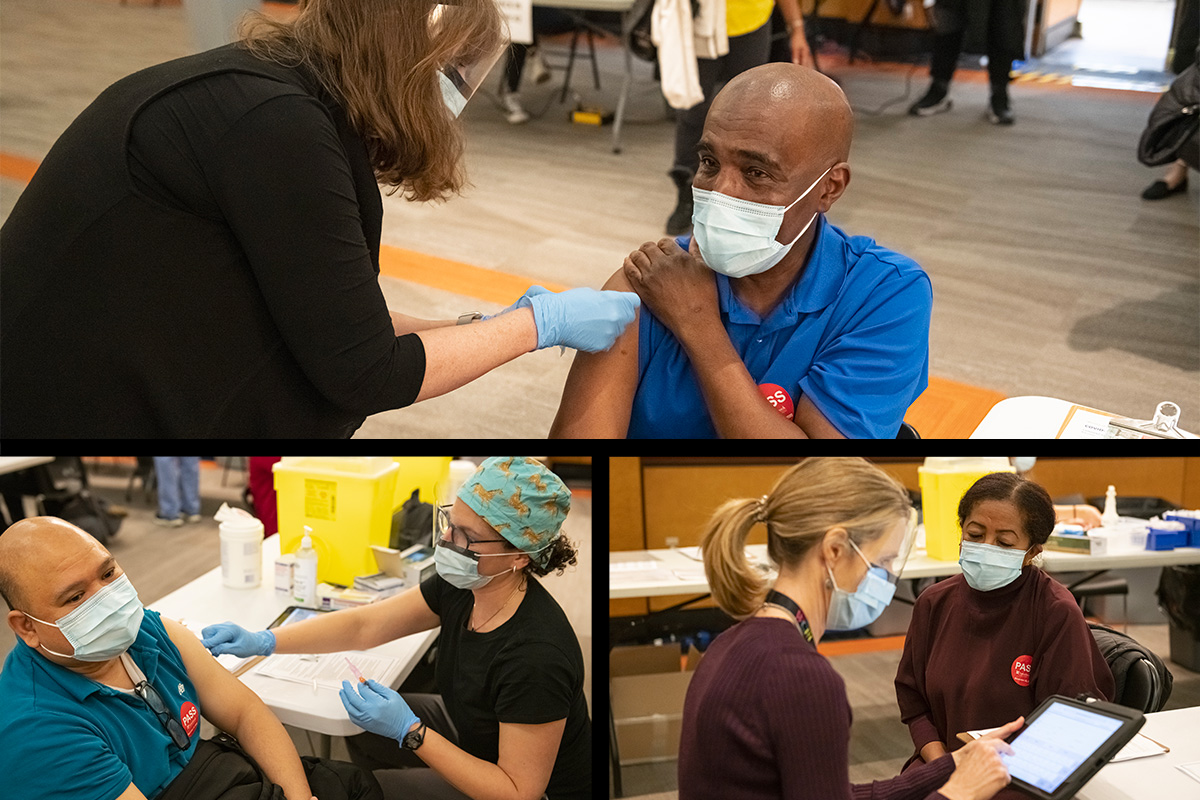
On December 22, 2020, Sunnybrook opened its COVID-19 vaccine clinic and began vaccinating staff of long-term care settings, followed by retirement homes, from the area surrounding the hospital.
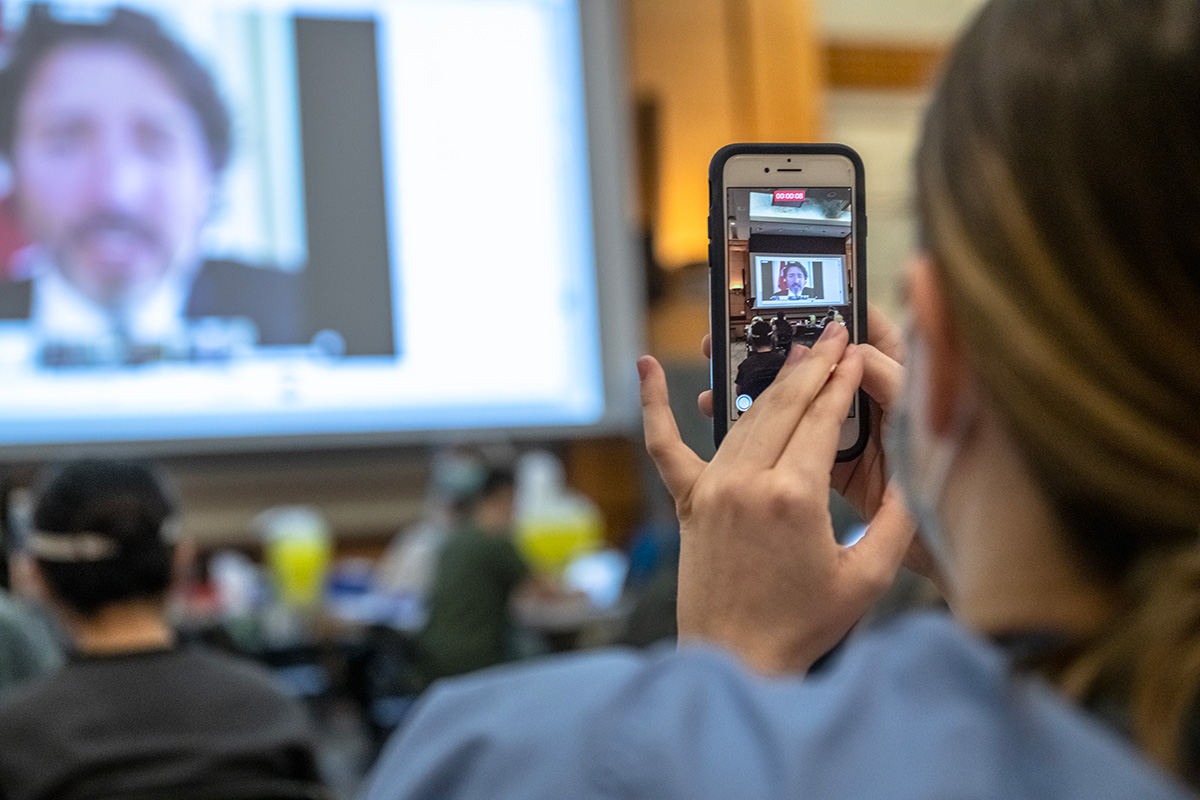
Prime Minister Justin Trudeau and MP Rob Oliphant made a virtual visit to Sunnybrook on January 8, 2021 to thank our teams for their hard work during the pandemic.
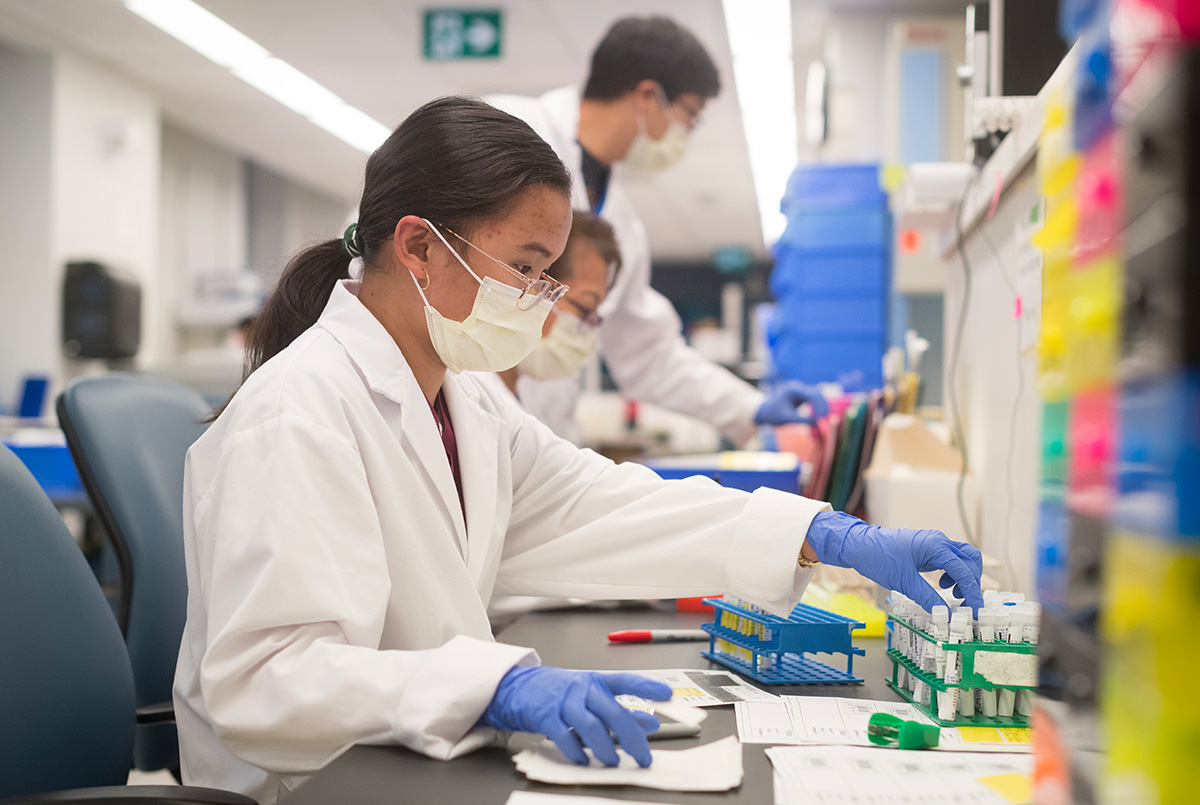
On January 9, 2021, the Shared Hospital Lab (SHL), located at Sunnybrook's Bayview Campus, processed its one millionth COVID-19 test. SHL is a partnership between Sunnybrook, North York General Hospital, Scarborough Health Network, and Michael Garron Hospital.





